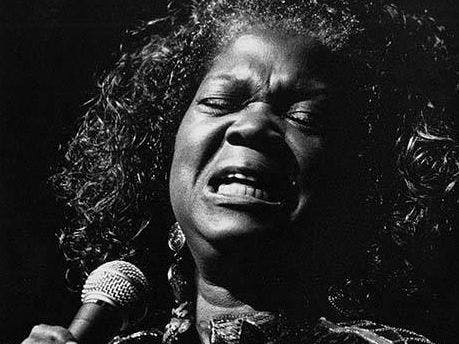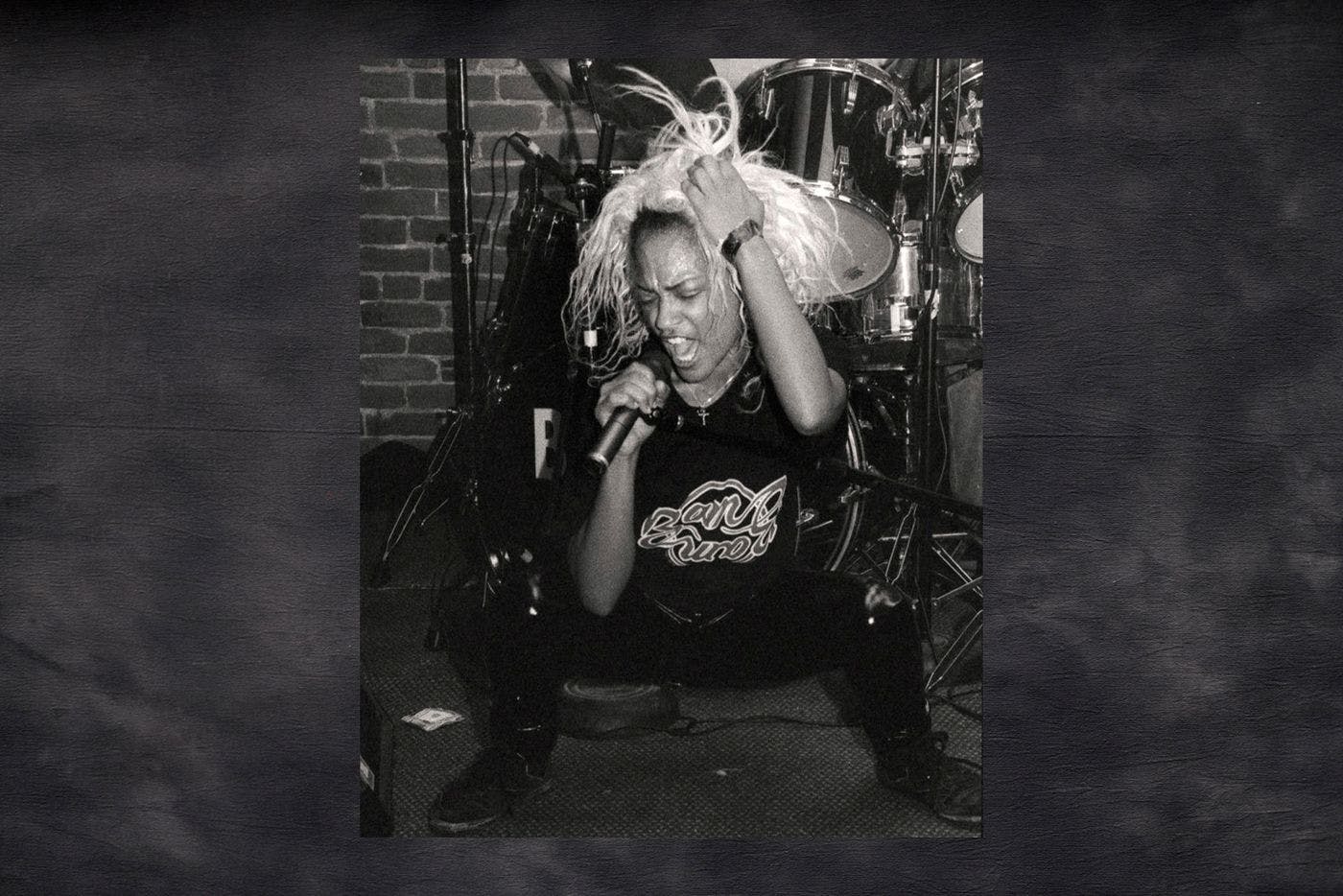
Julian Priester
A fount of knowledge for the jazz community, the trombonist and living legend is shaping the next generation of Seattle musicians.
With a voice like ‘honey at dusk,’ the singer helped put Seattle’s early jazz and blues scene on the map.
by Jasmine Mahmoud / June 1, 2022

In 1944, when Joseph Anderson was looking to move his family out of Texas, Seattle sounded like an ideal location. He had heard it was a sleepy fishing town, more hospitable to Black people than Houston, and supposedly lacked a dynamic music scene. This last was important because his teenage daughter, Ernestine, was spending more time singing than on studies — and her grades were slipping as a result.
“[My grandfather] moved over here from Texas because he was trying to get her away from the nightlife,” says Ernestine Anderson’s daughter, Shelley Young. It didn’t work out that way.
Almost as soon as she arrived, Anderson became an integral part of the Seattle jazz and blues scene. She went on to record more than 30 albums and earn four Grammy award nominations, thanks to her sultry and comforting alto voice — famously described by Quincy Jones as “the sound of honey at dusk.” Across her long career (she kept singing into her 80s), Anderson carried jazz and blues standards around the country, including to the Kennedy Center and Carnegie Hall.
“Ernestine was jazz and blues personified — she musically participated in both worlds,” daughter Young says of her mother’s musical impact. “Singing the blues involves storytelling,” she continues, “and she loved telling a story … taking all possible advantages from every word she delivered, leaving the listener feeling the beat of the music and the sound of the words.”
Anderson’s own story began in Houston, where she was born on Nov. 11, 1928, with a twin sister, Josephine. Growing up in 1930s Houston, Anderson’s attention piqued anytime she heard music. As early as 3 years old, she was singing along with the John Lee Hooker and Muddy Waters records her parents played. Another early influence: Sarah Vaughan, whom she vocally emulated, as well as the big bands she heard on the radio.
But the young Anderson’s music world wasn’t restricted to what came through a volume dial. She hung around her father’s gospel quartet and absorbed music at her grandparents’ Baptist church — eventually performing solos at Sunday services.
In 1940, Anderson’s godmother entered her into a contest at Houston’s Black-owned Club Eldorado, a mainstay for Black secular music. After Anderson — then age 11 — won the $25 prize, she began singing in a weekly residency there, making more in tips than her father did in construction worker wages. In a 2004 interview, Anderson said she “honed her craft” at that residency. “You learned how to sing in front of an audience and … from the older artist[s], picking up whatever you could.”
When Anderson landed in supposedly sleepy Seattle, she found a vibrant Black music scene, especially in the jazz clubs on Jackson Street. While living with her family in a Rainier Valley housing project and attending Garfield High School — with classmate Quincy Jones — she found ways to participate in the thriving artistic community. Anderson joined Robert A. “Bumps” Blackwell’s Junior Band, and as historian Peter Blecha writes, gigged “at the region’s many military bases, in a tent at a fair in Yakima, and as far away as Victoria and Vancouver, B.C.”
Anderson’s recording debut came in 1947, when she, Quincy Jones and other members of Blackwell’s band went to Tom and Ellen Ogilvy’s Electro-Mart record store in Seattle to cut an acetate “instant disc” cover of “Lover Man” (notably sung by Sarah Vaughan). Unfortunately for fans, this popular 1940s quick-recording format wasn’t made for commercial release. Later that year, Anderson moved to Los Angeles to perform with the Johnny Otis band at Club Alabam.
Over many decades, schoolmate Quincy Jones would continue to play a role in Anderson’s career. She returned to Seattle in 1948 and gave birth to the first of three children. In 1952, she began touring nationally with Lionel Hampton’s orchestra, and “Quincy Jones was there, too,” Anderson said, “writing for the band.” Decades later, in the 1990s, Anderson signed onto Jones’s Qwest Records, releasing Now and Then (1993) and Blues, Dues & Love News (1996) — both Grammy nominated.
But her first full-length album dropped in 1956, after she had been living in Sweden for a time: Hot Cargo, which became a hit in Europe before being released two years later in the United States. That album includes “Zing! Went the Strings of My Heart,” a bouncy, piano-laced song in which Anderson’s powerful voice swims and skips between the beats. “Ernestine mastered the art of phrasing to make the songs she sang sound like stories, and sometimes you would see yourself in them,” Young says. “She understood how vital timing and pronunciation are in jazz and blues music.”
In 1958, she performed at the first Monterey Jazz Festival, and in 1959 won “Best New Vocal Star” award from DownBeat magazine. During her career, she sang all over the world — bringing her daughter Shelley with her to Japan, Montreal, New York and Philadelphia.
But the 1960s were challenging, as rock displaced jazz tastes. “When rock ’n’ roll became the music of America, I moved to London for two years," Anderson recalled in a 2004 interview. “In order to keep working I had to leave the country.” But when she returned to a more rock-focused United States, Anderson started to lose confidence. “I decided maybe it was time for me to give it up,” she said, “and that’s what I did. I came home to Seattle.” Once back, she turned to Buddhism to keep herself going.
After her hiatus, Anderson began to sing again in the 1970s, first at Pacific Northwest venues. “A friend, the bassist Red Kelly, had a club in Tacoma, and I used to go up there to sing every weekend for a year, just getting my throat together again,” Anderson said. “Another friend had a jazz festival on Vancouver Island, and he asked me to do this gig, and everybody was there — Monk Montgomery, Ray Brown, so many musicians.” She kept at it, taking the stage and stunning audiences year after year, including in 2002, when she won the Golden Umbrella at Bumbershoot.
Reviewing a 2008 show Anderson performed just before she turned 80, New York Times writer Ben Ratliff wrote, “Nobody who hears her has to be told why she’s special. It’s obvious that she’s working with a disappearing musical language: with reserved, curvaceous phrasing that slows down time, and passing bits of earthy shouting.”
Young remembers her mother, who passed away in 2016 at the age of 87, for her sense of humor. “We laughed all the time. … She was always upbeat.” But Young says Anderson also left something more tangible than laughter: “enormous” philanthropic contributions to the city.
“Each year, she performed dozens of benefits and raised hundreds of thousands of dollars for music programs at Roosevelt High School, Garfield High School, Washington Middle School, Boys and Girls Club, Big Brothers/Big Sisters, the YWCA, the Fred Hutchinson Cancer Research Center and other local charities,” Young says. In 2012, Seattle’s Low Income Housing Institute named a senior housing complex in her honor: “Ernestine Anderson Place.”
“Ernestine was a considerable artist and an equally significant philanthropist who believed in helping others, [especially] causes that served children,” Young says.
But in memories, Anderson’s daughter returns to her mother’s voice: “When she sang, she had a way of pulling you in as she massaged the lyrics, taking you on an excursion you didn’t want to end. She understood the saying: Leave them wanting more.”
Black Arts Legacies Project Editor
ARTIST OVERVIEW

Singer
(1928-2016)

A fount of knowledge for the jazz community, the trombonist and living legend is shaping the next generation of Seattle musicians.

The first Black art instructor in Washington was an experimental artist ahead of his time.

For three decades, this Seattle DJ electrified the airwaves, paving the way for future Black radio personalities.

A poet at heart, this soul singer/songwriter is inspiring the next generation of Seattle musicians.

As a founder of Digable Planets and Shabazz Palaces, the Seattle rapper has pushed hip-hop to the outer limits.

The Seattle rapper keeps his memories of the Central District alive with vivid lyrics and a jazz sensibility.

A pivotal figure in Seattle’s proto-grunge scene, the Bam Bam singer has been long-overlooked. Now, rock history is being rewritten.

The talented multi-instrumentalist uses music to string communities together.

Meet a Seattle music pioneer and the band carrying the legacy of Northwest rock forward.

This beloved Seattle DJ found his divine calling in music — and in sharing it with others.

Composing meditative music with a looping pedal, this Seattle cellist has charted her own sonic path.
Thanks to our Sponsors
Your support helps Crosscut create projects like Black Arts Legacies. Learn how you can help with a one-time donation or recurring membership.
Support Crosscut